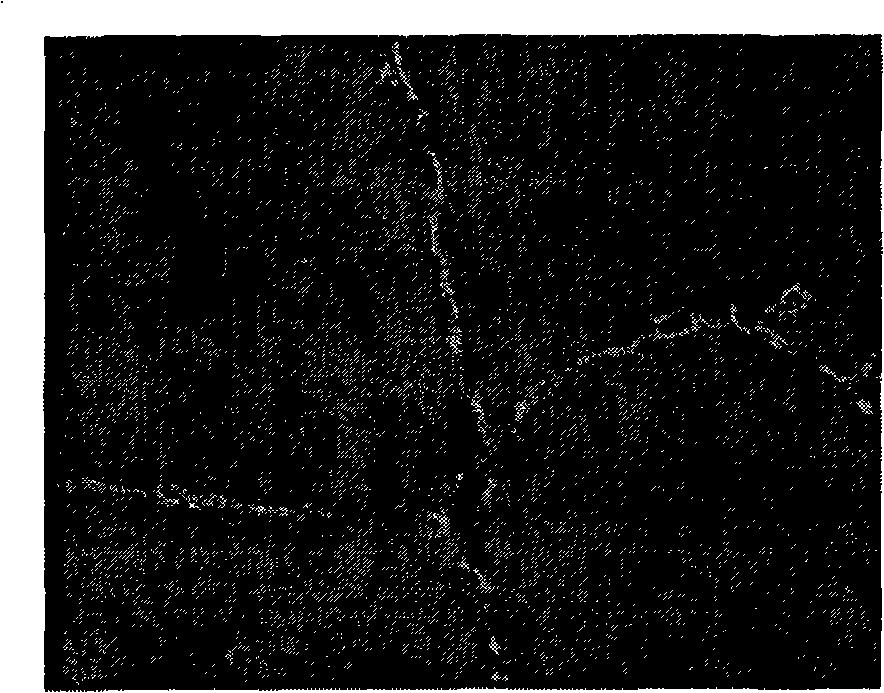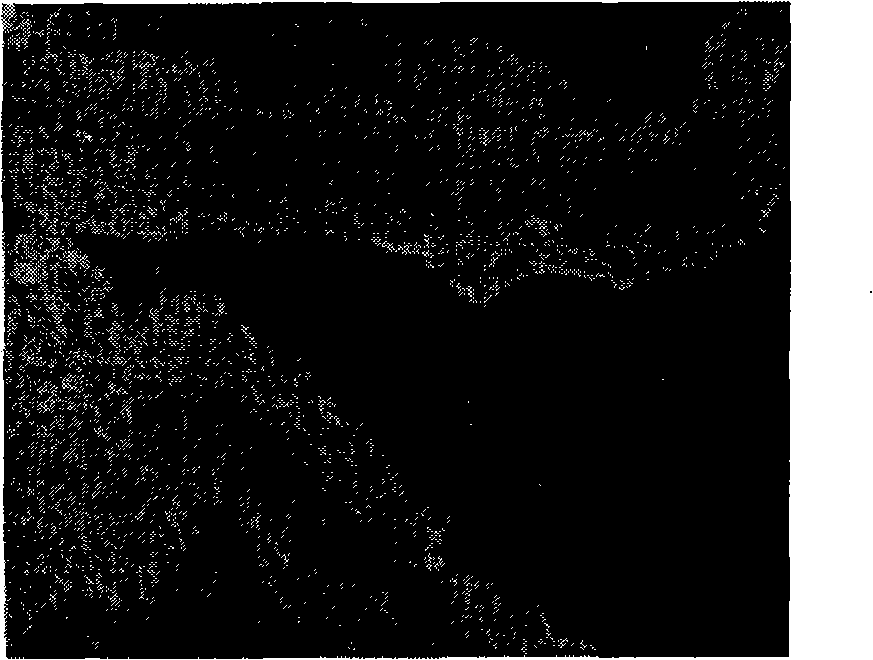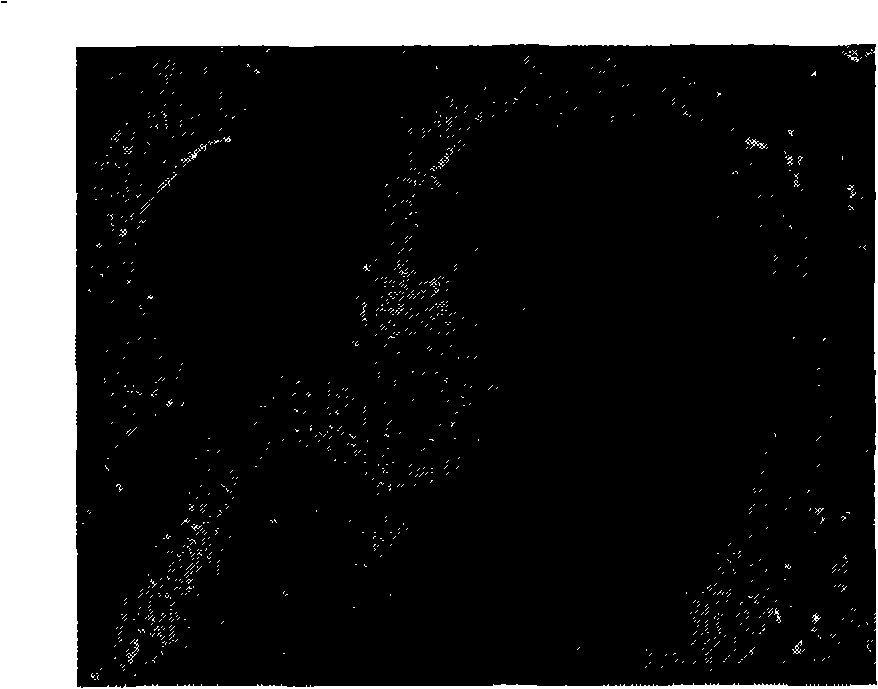Detection method and reagent kit of anti-keratin antibody
An anti-keratin, detection method technology, applied in biological testing, material inspection products, fluorescence/phosphorescence, etc., can solve the problems of weak fluorescence intensity, missed detection, etc., achieve increased fluorescence intensity, convenient use, improved resolution and The effect of sensitivity
- Summary
- Abstract
- Description
- Claims
- Application Information
AI Technical Summary
Problems solved by technology
Method used
Image
Examples
Embodiment 1
[0029] The detection method of embodiment 1 anti-keratin antibody
[0030] During detection, add 25 μl of 1:10 diluted serum to be tested in the reaction area of the biological sheet, incubate in a wet box at 37°C for 30 minutes, rinse with PBS, spin dry, add 25 μl of complement, incubate in a wet box at 37°C for 30 minutes, rinse with PBS, Shake dry, then add fluorescein-labeled anti-C 3 c antibody 25 μl, incubated at 37°C for 30 minutes, rinsed with PBS, dried, and mounted with buffered glycerol. Mounting is not required for direct detection. The slides were observed under a fluorescent microscope, and the typical regular linear or lamellar fluorescence in the stratum corneum was positive.
[0031] In order to better understand the present invention, the positive effect of the present invention aspect detection anti-keratin antibody is further illustrated by the result that two kinds of detection methods draw during clinical detection below:
[0032] The selected cases ...
Embodiment 2
[0042] Example 2 Kit
[0043] 1. Box body
[0044] The kit of the present invention is for one-time use. The box body 1 is in the shape of a hexahedron made of cardboard and consists of a box bottom 5 and a box cover 2 . The bottom of the box is connected with the lid as a whole. Bottom of the box 5 is provided with a bottle holder 3 at the long side where the bottom of the box 5 links to each other with the lid 2, and the bottle holder is provided with 7 holes 4 for placing bottles 10 that various reagents are housed. In the middle of the bottom of the box 5 there is a baffle 7 extending from the bottle holder 3 to the other long side, dividing the bottom of the box 5 into two parts, one of which is placed with a buffer and a cover, and the other part is placed with a carrier sheet with a packaging bag 6 13 and instructions (not shown). The length, width and height of the box body match the shape of the contained items.
[0045] 2. Items equipped with the kit
[0046] 1...
Embodiment 3
[0056] Embodiment 3 kit experimental operation steps
[0057] Preparation: Take the slides out of the kit and let it warm to room temperature.
[0058] Dilution: first dilute 50ml of concentrated phosphate buffer solution with distilled water to 1L, the phosphate content of the diluent is 10.2g, pH=7.2. Add 2ml Tween 20 into the diluted phosphate buffered saline (PBS-Tween 20), and stir well. Dilute the serum to be tested with PBS-Tween 20 at a ratio of 1:10 (positive and negative control serum do not need to be diluted), and mix well before use. Reconstitute 100 μg of powdered complement with 50 μl of distilled water into a complement application solution.
[0059] Loading: Add 25ul of diluted serum dropwise to the reaction area of the slide to avoid air bubbles. For the first incubation: place the slide with the bioflake facing up, cover the reaction area with a cover slip, and the reaction starts immediately. Make sure the specimen is in contact with the biochip and i...
PUM
 Login to View More
Login to View More Abstract
Description
Claims
Application Information
 Login to View More
Login to View More - R&D
- Intellectual Property
- Life Sciences
- Materials
- Tech Scout
- Unparalleled Data Quality
- Higher Quality Content
- 60% Fewer Hallucinations
Browse by: Latest US Patents, China's latest patents, Technical Efficacy Thesaurus, Application Domain, Technology Topic, Popular Technical Reports.
© 2025 PatSnap. All rights reserved.Legal|Privacy policy|Modern Slavery Act Transparency Statement|Sitemap|About US| Contact US: help@patsnap.com



